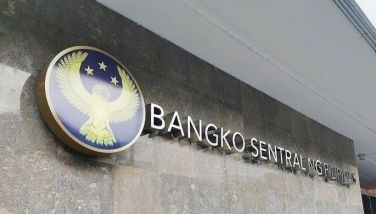Filipinos continue to cope with inflation
MANILA, Philippines — Filipinos are now more resilient amid the faster increase in the prices of consumer products, rising interest rates, weaker peso, as well as fears of an overheating economy.
The Philippines is now beset with domestic and external shocks, but Filipinos are expected to emerge unscathed from these challenges.
Antonio Moncupa, vice chairman and chief executive officer of East West Banking Corp., told The STAR the economy is in a better position to weather potential economic shocks.
“The country is more resilient. We don’t have the problems of over borrowing of corporates, no foreign currency borrowings by the private sector, no real estate bubble, and no overvalued currency,” Moncupa said.
The Philippines has booked 77 quarters of uninterrupted economic growth as the economy grew by 6.8 percent in the first quarter from 6.5 percent in the fourth quarter of last year.
Economic managers penned a GDP growth of between seven and eight percent this year from last year’s 6.7 percent.
Filipino consumers are now dealing with the faster rise in consumer prices, with inflation leaping to a fresh five-year high of 5.2 percent in June from 4.6 percent in May due to higher oil prices, more expensive rice, and the impact of the tax reform program.
Republic Act 10963 or the Tax Reform for Acceleration and Inclusion (TRAIN) Law that was implemented at the start of the year reduced personal income tax rate, translating to higher take-home pay for workers, but raised the excise taxes on fuel products, motor vehicles, as well as sweetened beverages.
Inflation averaged 4.3 percent in the first half, exceeding the two to four percent target set by the Bangko Sentral ng Pilipinas (BSP), and is expected to climb further with potential second round effects such as higher wages, more expensive utility rates, and transport fare increases.
The government has already approved an increase in the minimum wage hike in the provinces as well as a P1 provisional increase, bringing the minimum fare in jeepneys to P9.
The BSP’s Monetary Board delivered back-to-back interest rate hikes in May and June as it turned more hawkish to curb rising inflationary pressures. It lifted rates for the first time in more than three years by 25 basis points on May 10 followed by another 25 basis points on June 20.
BSP Governor Nestor Espenilla Jr. hinted at a strong follow through monetary adjustment on the Aug. 9 rate-setting meeting of the Monetary Board.
HSBC economist Noelan Arbis said the Monetary Board may raise interest rates by as much as 50 basis points when it meets next month, while Deutsche Bank economist Michael Spencer sees a 100 basis point rate hike in the second half followed by another 50 basis points in the first half of next year.
For his part, Union Bank of the Philippines president and chief operating officer Edwin Bautista told The STAR the Philippines is not facing an economic crisis.
“We are not facing any economic crisis. The economy remains healthy,” Bautista said in a text message.
According to Bautista, the challenges faced by the economy, including higher inflation, are just temporary.
Monetary authorities are committed to bring down inflation back to the two to four percent target set by the BSP for 2019 as the consumer price index is seen exceeding the target this year.
The last time the BSP target was breached was in 2008 when inflation averaged 9.3 percent due to elevated oil and food prices.
Higher interest rates could slow down economic growth as consumers and businesses borrow and spend less, translating to lower demand. Likewise, borrowers would have to shell out more to repay their financial obligations.
On the other hand, the peso emerged as the second weakest currency in the region after the Indian rupee, tumbling by around seven percent to hit a fresh 12-year low after piercing the 53 to $1 level due to the series of interest rate hikes by the US Federal Reserve, as well as the higher demand for dollars to pay for the importation of capital equipment and raw materials to support the growing economy.
The weakening currency is a double-edged sword as it benefits families of overseas Filipino workers, as well as exporters who earns dollars, but punishes Philippine companies with huge foreign exchange obligations, as well as importers who need to shell out more pesos to pay the importations of capital equipment and raw materials needed for their operations.
Based on the second quarter Consumer Expectation Survey of the BSP, the optimism of Filipino consumers remained generally stable with the confidence index at 8.7 percent for the third quarter and 23.1 percent for the year ahead.
“The relatively steady outlook for the next quarter and the year ahead stemmed from the counterbalancing of the number of respondents that reported more positive views on the economy, in anticipation of more jobs and additional income, versus those with negative views due to expectations of higher prices of goods,” the BSP said.
The Duterte administration is undertaking a massive infrastructure buildup, allocating P8.4 trillion under the Build Build Build program.
- Latest
- Trending
























